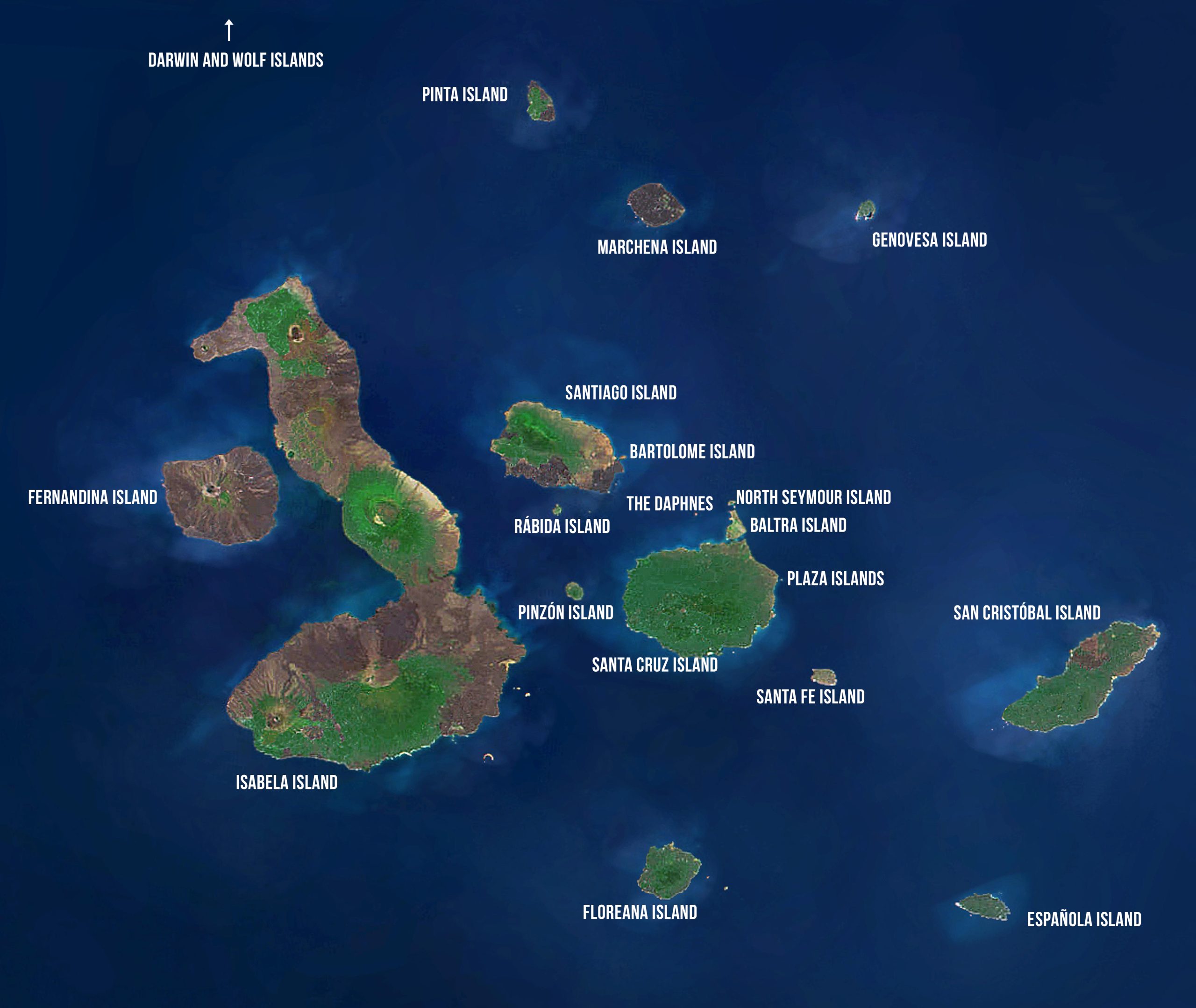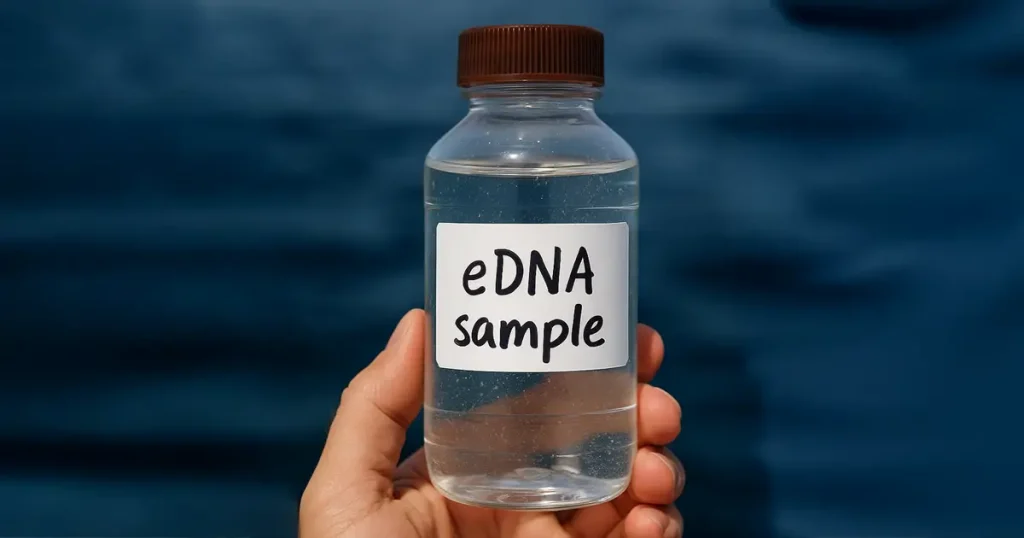Española Island
Española Island

Area: 60 km2 or 37 mi2
Maximum Altitude: 206 m or 675 ft
Human Population: 0
HISTORY
Española is the southernmost of the Galapagos Islands and is also one of the oldest. Geologists estimate it is about four million years old. Española is a classic shield volcano, created from a single caldera in the center of the island. Over thousands of years, the island slowly moved away from the Galapagos hot spot where it was formed and the volcano became extinct. Erosion began to occur, eventually resulting in one of the flattest islands in the archipelago with one of the lowest elevations.
TODAY
The quantity and variety of wildlife found on Española make its two visitors sites among the most popular and attractive of the archipelago. Because Española is one of the most isolated islands in Galapagos, it has a large number of endemic species — the Española mockingbird, the Española lava lizard, and the waved albatross, to name a few.
CONSERVATION HISTORY AND CHALLENGES
The Española giant tortoise species was rescued from the brink of extinction and is now one of Galapagos’ greatest conservation success stories. Starting with only 14 individuals found on the island in the 1960s, scientists and resource managers at the Charles Darwin Foundation and Galapagos National Park have since released nearly 2,000 young tortoises on Española where they are now thriving. Read more about the Giant Tortoise Restoration Initiative.
Española is probably most well-known for being the sole breeding ground for the entire population of the world’s Waved Albatrosses. Given their limited breeding range, the species was originally listed as Vulnerable on the IUCN Red List. However, in 2007 it was changed to Critically Endangered due to its decreasing population resulting from threats including fishing in waters near the mainland, oil pollution from fishing boats, and global warming and its effects on the frequency and strength of El Niño events. The Waved Albatross population is currently being monitored by the Charles Darwin Foundation and the Galapagos National Park Service and activities to protect them and their habitat are underway.
Visitor Site: Punta Suarez
One of the most popular visitor sites in Galapagos, Punta Suarez has an amazing variety and quantity of wildlife. Lazy sea lions may greet visitors at the rocky landing site, forcing visitors to step over or around them to get to the trail. Groups of young sea lions are often found nearby playing in the shallow water, waiting for their mothers to return with food. Brightly-colored red and green marine iguanas can be found lining the coastal areas near the landing site. They are the only marine iguanas that remain brightly colored throughout the year.
The trail passes by a small beach occupied by more sea lions and large and colorful Española Lava Lizards. It then cuts through some saltbush, where Galapagos Hawks, Española Mockingbirds, three species of Darwin’s finches, and Galapagos Doves all go about their business. Visitors then come upon the impressive nesting colonies of Blue-footed and Nazca boobies, who make their nests right along the visitor trail near the western cliffs of the island. Swallow-tailed Gulls and Red-billed Tropicbirds dash in and out of the cracks in the cliffs. Continuing inland, the trail leads to a cliff on the southern side of the island overlooking the ocean. Waves crash into a lava fissure, creating a blowhole that sprays water nearly 30 m into the air at high tide.
The highlight of this visitor site — and perhaps one of the highlights of the Galapagos Islands — is strolling along the edge of the Waved Albatross breeding colony. With a population of 25,000 to 30,000, nearly the entire world population of the adult birds can be found on Española between April and December. They mate for life and perform an elaborate mating dance, a spectacle that can last five days and may include stumbling, honking, and beak-fencing. Waved Albatross pairs produce a single egg each year and share responsibility for its incubation. Their grace in the air is sharply contrasted by their comic clumsiness on land. Lucky visitors will observe Waved Albatrosses wobble awkwardly to the cliff’s edge before launching themselves into the wind to take flight—many of them for the very first time in December. The entire colony leaves Española by January to fish for three months before returning. The young albatrosses will remain at sea for about five years before returning to Española to seek their mate.
Visitor Site: Gardner Bay
The beach at Gardner Bay offers one of the best beaches to experience “relaxing beach time” in Galapagos. The expansive white sand beach (one of the longest in Galapagos at 2 km) attracts many napping sea lions, as well as tourists. There is no inland trail and visitors are required to remain on the beach. Three species of Darwin’s finches and Española Mockingbirds may be seen at this site. Española Mockingbirds are fearless and frequently land on visitors’ heads and shoulders in search of food. This mockingbird is slightly larger than other mockingbird species found in Galapagos. It has a long, curved beak and is the only carnivorous mockingbird species, feeding on a variety of insects, turtle hatchlings, sea lion placentas, and even baby boobies. Visitors can swim or snorkel along the rocks in the shallow water near the beach. Green Sea Turtles may be found gliding through the water or hauling themselves onto the beach for a rest or for nesting (between January and March).
Marine Sites: Gardner Island and Tortuga Rock
Snorkelers will marvel at schools of large colorful tropical fish, including Yellow-tailed Surgeon fish, King Angelfish, and Bump-head Parrotfish. A few underwater caves teem with wildlife, and there are rocky walls covered with various invertebrate species. The occasional massive Manta Ray or Spotted-Eagle Ray may glide by as White-tipped Reef Sharks nap on the ocean floor in rocky areas. This snorkeling site also offers a wonderful chance to swim with playful sea lions.
Conservation Site: Waved Albatross Colony
Waved Albatrosses are the largest birds in Galapagos. They are remarkable birds, standing nearly 1 m high with wingspans of 2 to 2.5 m and living up to 40 years. Every year the entire world’s population of adult Waved Albatrosses returns to Española during the nesting season, from April to December. With such a confined breeding range and due to other present-day threats, the Waved Albatross is listed as Critically Endangered on the IUCN Red List. The population continues to decrease for a variety of reasons, including water pollution and oil spills. Waved Albatrosses also perish as a result of fishing activities off the coast of Peru—whether as bycatch or as intentional harvests to be consumed by humans. El Niño events can wreak havoc on the population, as does natural predation on the eggs by mockingbirds. The Charles Darwin Foundation advocates for and spearheads conservation activities to ensure the survival of these birds. Since 1999, CDF scientists and Galapagos National Park wardens have surveyed and closely monitored the Waved Albatross population. Recent studies have revealed that adult survival rates decreased from 1994 to 2001, which has resulted in a smaller breeding population today. Yearly monitoring of population trends is critical to ensure the necessary improvements in conservation efforts to protect the Waved Albatross. Current efforts to establish joint conservation policies between Ecuador and Peru are underway.
Conservation Site: Tortoise Repatriation
The tortoises of Española represent one of the greatest conservation success stories in Galapagos. In the 1960s, the population had dropped to a mere 14 individuals. The easy access to the island resulted in the majority of tortoises being removed by whalers and others during the previous century. Introduced feral goats overran the island for many years and not only competed with tortoises for food but also destroyed much of their habitat. The remaining 14 tortoises (12 females and 2 males) were removed from Española from 1963-1974 and a breeding program started at the Tortoise Center on Santa Cruz. A third male was returned to Galapagos in 1977 from the San Diego Zoo. Through a combination of research and management, nesting, incubation, and rearing were improved to such a degree that an annual cohort of 50-60 Española tortoises is produced. Nearly 1,500 young tortoises have been repatriated to Española. The repatriates began breeding on the island as early as 1990 and the population is growing. Goats were finally removed from Española in 1978 and current efforts are aimed at ensuring the restoration of the cactus forests that existed prior to the presence of goats.



